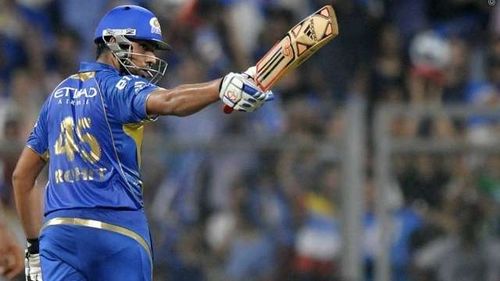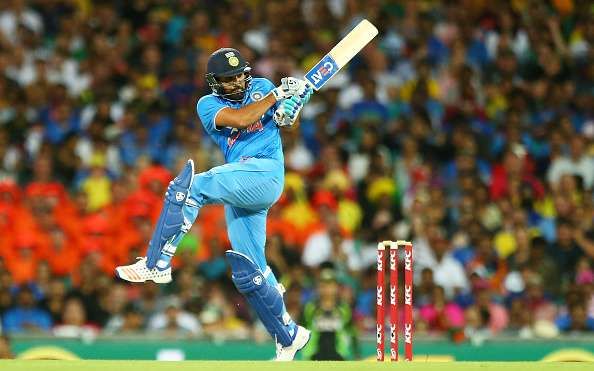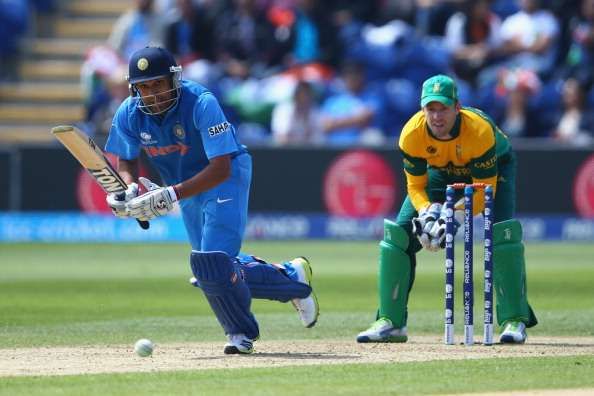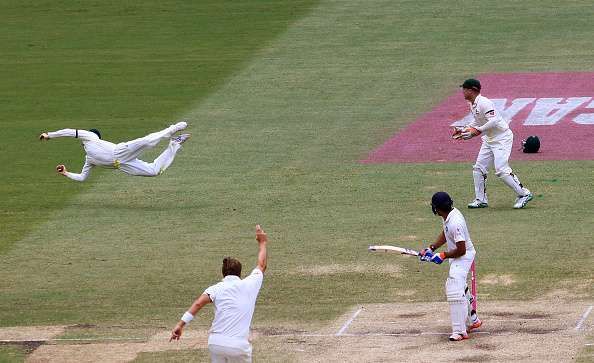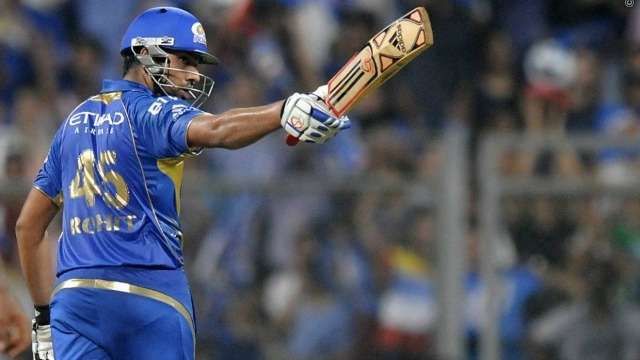
Under the SKanner: Rohit Sharma
Date: March 2, 2008, Venue: Sydney Cricket Ground
India were in the finals of the CB series and were up against hosts Australia. The bowlers had done a commendable job as they had restricted the formidable hosts to a manageable 239 in the 50 overs.
Sachin Tendulkar then decided to dig in and see the chase through and he was given good support by Robin Uthappa was the second opener. However, after a solid opening start a wobble in the middle overs saw India at an iffy 87 for 3. A partnership was needed and someone had to stick it together along with Sachin, who looked in control at the other end.
Enter, Rohit Sharma, the young Mumbai batsman who had made everyone talking back home and he carved out a patient and yet sparkling 66 and effectively won the match for his team.
What stood out was his ability to pick up lengths rather quickly and then manoeuvre the balls in the gaps with his flexible wrists. He pulled out the big strokes if and when the situation demanded and one could easily make out that this young man was destined for greater things.
However, after 9 years, the young prodigy has not yet established his name in Test cricket, but at the same time has become one of best openers in world cricket against the white ball.
Here we take a look at the strengths and weaknesses of Rohit Sharma and dissect his playing technique and try to decipher the reason behind his prowess in ODIs and his struggles in the longest format.
Strengths:
Against the Pacers:
1. Stillness at the crease: Coaches and pundits all over the world will tell any young batsman that one of the first virtues to be a good batsman is to be calm and still at the crease. A wobbly head more often than not takes the eyes off the ball and which is where the problem starts. Rohit has always been a batsman in the classical mould and one can easily make out his posture when taking guard. There are no exaggerated or unnecessary movements, it is all very smooth which is great way to start any innings.
2. Ability to pick up lengths: This particular point can seen as an extension of the previous trait. A still head allows the batsman to follow the trajectory of the ball which in turn enables him to read the lengths of the ball quicker and this is where the Mumbai batsman stands out. He has an uncanny ability to judge the length of the ball and then react accordingly. Often we have heard commentators say that he seems to have a lot of time, but then this is just his ability to read the ball and decide which stroke to play as his feet are already in position to execute the stroke.
3. Short Ball: No batsman will admit that he is confident against the short ball. A fast nasty bouncer aimed at your head is bound to make you uncomfortable. However, how you react to it determines the worth of any batsman and Rohit has shown that he is quite prepared to take on the short stuff. He is like sprouting flower in a barren patch of land as historically Indian batsmen have been bullied with the bumpers, but Rohit stands out and in more than one way. Analysts will say that the short ball needs to be tackled by going back deep in the crease and then swivel on the back foot which provides control and then roll the wrists overs the ball to keep it down.
Not for Rohit, his initial trigger movement is plonking his front foot, and then when the ball is banged in short, he stays put and pulls/hooks off the front foot, and more often than not creams the stroke owing to the languid swing of the bat confidence in his abilities. The front foot pull shot which enamoured the hearts of many when a certain Viv Richards played has found another candidate to do it justice.
Also, the Mumbai boy is extremely strong off the backfoot which allows him to ride the bounce of the ball particularly well as he braces up for a cut stroke or a backfoot punch. The knack of picking up lengths surfaces again as it allows him to go back and across to meet the ball on the top of its bounce and then carve it away past backward point.
With this particular movement, he also opens up the option of a punch through the covers as he has gauged the bounce and if there is not even width to go for the cut, he can easily stand up and punch it through covers, point or mid-off.
4. Full/ Length ball: The short ball is often followed by a full, length ball outside off to suck the batsmen into a false sense of security. Owing to the stillness at the crease, more often than not Rohit seems to be ready for the dangling carrot as he is a lovely driver of the ball. His trigger reaction as was mentioned earlier is getting on to the front foot which makes him ready for any length ball outside off. Also, he leans into the stroke which ensures that all his body weight is transformed into the stroke and also helps him stay in the stroke for a longer time which gives him the control.
Against the spinners:
1. The best possible way to play the spinner is to read the flight of the ball from the hands as gives the batsman an idea about the trajectory and where the ball will spin. As his head is still, Rohit has excellent control against the spinners. He uses the crease to a great deal and is either right forward or goes back deep into the crease to encounter the ball.
Another vital technical acumen needed to counter spin bowling is the ability to use soft hands to push the ball into the gaps and change strikes and once again Rohit ticks the box.
Currently, when he is the zone, there are few players who hit the ball as clean as Rohit Sharma and along with the gift of timing he also has core strneght which enables him to smack the spinners if and when he pleases.
So, if he is technically so proficient, why is still not a regular in the Indian Test team?
We have the answers, we believe!
1. Flirting with the ball outside off: As we have already mentioned, his trigger movements is on the front foot and when the ball is on a good length and on the fifth stump line, he can get into a tangle as he tries to dab the ball away, but then even with a little beat of seam, he edges the ball to the keeper or slip cordon.
The aforementioned channel is called the 'corridor of uncertainty' for a reason as batsmen seldom know whether to be on the front of backfoot and which stroke to execute and Rohit has been guilty of having a waft at the ball without any conviction and has led to his demise on so many occasions, more so when the team travels overseas where the conditions are conducive to swing bowling.
2. The incoming ball: A ball which pitches on the off stump and seams or jags back in has often created a lot of problems for the right-hander and this may be due to the fact that he is set up on the front foot and does not have enough time to go back and encounter the ball. Also, the front pad meddles with his bat swing and more often than lot, this little bit of hesitation is enough for the ball to breach the defence.
3. Is leg spin a problem?
During this IPL, the batsman has been dismissed by leg spinners quite a number of times and this has forced people to jump to conclusions that he might be struggling against the mystery and art of a leg spinner. But is there merit to this assumption?
Rohit normally likes to feel bat on the ball and wants to dominate the spinners. Also, he was making a comeback this IPL and hence was not quite comfortable against the leg spinners and never seem to get going. He more often than not played outside the line of the ball and was deceived by the googly. However, down the line he looked far more settled and thus it seems as if the struggle was more due to rustiness than any technical flaw.
While technique is one essential element in cricket, temperament often is what differentiates the good players from great one. Rohit has the technique and he just has to be mentally tough to crack Test cricket!
